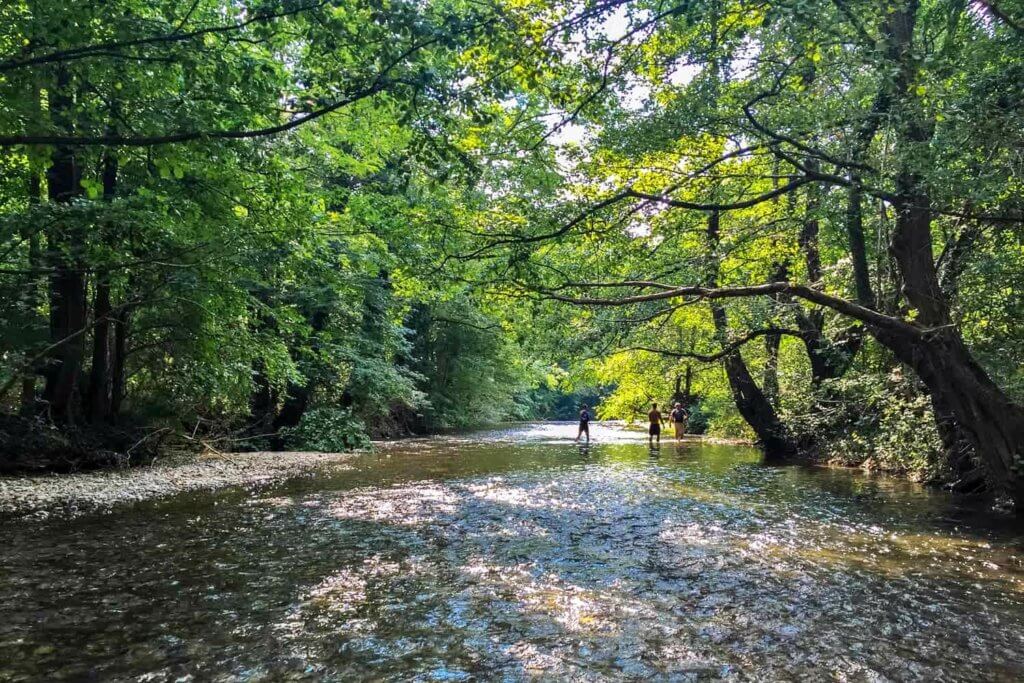In the heart of Serbia, one hundred kilometers southwest of Belgrade rises Valjevo mountain range made of Medvednik, Jablanik, Povlen, Maljen, and Suvobor mountains.
And on the banks of the four rivers (Obnica, Jablanica, Gradac, and Kolubara ) town of Valjevo is situated.
In the silence of spiritual peace, the Ćelije Monastery lives, with Lelić the most important Christian endowment of these parts. Valjevo valley in the east opens to Belgrade, from which Valjevo is only 100km away, and it is no wonder that in such a good position it has emerged in the administrative, economic and cultural center and headquarters of the Kolubara region.
History and culture of Valjevo
Valjevo is one of the oldest settlements in Serbia. It was formed at the junction of ancient roads and more than six hundred years ago there was a gathering place for travelers and traders.
Valjevo name is derived from the Old Slavic personal name Valj, and as a possessive adjective meant feudal estate ownership. This assumption is confirmed by the story that Valj was the owner of road bars around which the town developed then, today Valjevo. In addition to the philological interpretation of the origin of the name of Valjevo, there are various legends. In one, the future residents of the nearby hills rolled down the valley (srb. valjati – eng. rolling) and founded the city. According to the second legend, the city of Valjevo was named by a valid, fertile land and a valid, honest people. However, the best known is the tradition in which the Valjevo named after to rolling from which was made cloth that had once existed in large numbers along the Kolubara.
In the center of this peaceful town is a long promenade, street called Kneza Miloša street. Hundreds of people walk through the beautiful part of the city each day, enjoying in numerous cafes, locals, shops, restaurants and in of course, Valjevo Beer which is produced in the bear factory in Valjevo.

Valjevo walking area
In parallel with the main shopping and walking street on the right bank of the river, is Tešnjar. Tešnjar is an old city quarter built in the Serbian-Banat style of the 18th and 19th centuries, which gave the soul to a hundred small shops that can still be seen today. There are bakers, shoemakers, weavers, potters, waxers, sculptors, tailors, and barbers today.
Every year in August, Tešnjar hosts a famous festival called Tešnjar Evenings, which is a cultural, musical manifestation.
As a city of historical significance, Valjevo is a home of numerous monuments, galleries, and squares.
Some of the most important monuments are Desanka Maksimović (Serbian poet) monument, Vuk Karadžić (Serb philologist and linguist who was the major reformer of the Serbian language) monument, Živojin Mišić (Field Marshal Živojin Mišić GCMG, GCLH, KCB was a Field Marshal who participated in all of Serbia’s wars from 1876 to 1918) monument.
Surrounded by beautiful nature
But what is really breathtaking in this little town is his marvelous nature. Surrounded by forests, meadows, rivers, and streams, Valjevo is not a place you can pass for only one weekend.
One of the purest rivers in Serbia, Gradac, cuts the town and has so many little beaches, springs, places for rest and fun. Many of the restaurants and cafes are built on its shores.

Gradac river, photo by Borders of Adventure
Recreation and relaxation or walk through nature are also possible at the Pećina (Cave) Park, a large, forested park. In the park, there are various facilities such as small final courts, basket, running tracks, as well as facilities for the youngest. Near the park, on the other side of Kolubara is a karst cave, after which the park got its name.
In addition to walking and recreation within the caves and in the immediate vicinity of Pećina Park, there are a few cafes and restaurants where you can relax and refresh yourself. The park is a 10-minute walk from the city center.
7 km from Valjevo is a well know Petnica Village, famous for science center Petnica, but also known for gorgeous swimming pools, lake, and Petnica Cave.
Another favorite place among citizens of Valjevo is Divčibare, a plateau in the mountain of Maljen. It has an average altitude of 1000 m. It is 28 km from Valjevo and 110 km from Belgrade, and the air-spa of Divčibare offers rest and recreation. Hunting and fishing in the mountain rivers are common, that is why it is not odd that mountain presents a perfect getaway from town rush and an awesome holiday destination.
Valjevo and its surroundings are one of the biggest distributors of raspberries, and here is where you will with no doubt try some of the best raspberries in Serbia.

Valjevo region village beautiful nature
Today, Valjevo is a city of history and culture, but also the city that surrounds the untouched nature.
Museums and galleries, numerous cultural heritage, Brankovina, Divčibare, Vrujci Spa, Petnica, Gradac River and its canyon, Valjevo mountains and villages scattered across their slopes are the attraction that lures you to come.
FH
Hello,
Thank you for sharing the origins for the name Valjevo. Do you also know the origin of the Kolubara name? I have tried to search for it, but I couldn’t find it.